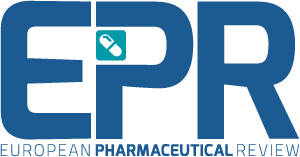Achieving rapid microbial method validation with precise reference standard quantification
11 June 2025
2:00pm
Shares
- Like
- Digg
- Del
- Tumblr
- VKontakte
- Buffer
- Love This
- Odnoklassniki
- Meneame
- Blogger
- Amazon
- Yahoo Mail
- Gmail
- AOL
- Newsvine
- HackerNews
- Evernote
- MySpace
- Mail.ru
- Viadeo
- Line
- Comments
- Yummly
- SMS
- Viber
- Telegram
- Subscribe
- Skype
- Facebook Messenger
- Kakao
- LiveJournal
- Yammer
- Edgar
- Fintel
- Mix
- Instapaper
- Copy Link
This webinar explores validation of rapid microbial methods with ready-to-use reference materials, a new industry standard in microbial QC testing.
In the pharmaceutical industry, maintaining the highest standards of microbial quality control (QC) is critical to ensure safety and efficiency of pharmaceutical products. Precisely quantified reference microbial standards play a vital role in validating microbial methods by ensuring accurate, consistent, and reproducible results.
In this webinar, find out how ready-to-use commercial reference microorganism formulations perform when validating rapid microbial methods.
This session evaluates tools including the ATCC MicroQuant™ reference materials, and highlights the automation and digitalisation benefits of the Growth Direct® System for EM and Bioburden applications.
Key learning points:
- Understand the benefits of fast assay setup using ready-to-use reference standards when validating rapid microbial methods
- Explore data highlighting the reproducibility of the ATCC MicroQuant™ quantified reference material on the Growth Direct® System
- View a demonstration of linearity between ATCC MicroQuant™ and a control using the Growth Direct® System
- See the ATCC MicroQuant™ Time-to-Result (TTR) on the Growth Direct® System.
Interested? Register now!
SPEAKERS


Owen Griffin, Senior Director, Microbiology, Rapid Micro Biosystems
Owen is Senior Director, Microbiology at Rapid Micro Biosystems. He has 15 years of experience working in and leading laboratories, in both sterile and non-sterile GMP facilities, leading teams that support API, excipient, and fill finish manufacturing activities.
Over his career he has supported the design of manufacturing cleanrooms and processes, environmental monitoring programmes, implemented contamination control strategies, designed microbial method validations, and led global initiatives as a Microbiology subject matter expert (SME).
Owen earned a BS in Microbiology and Laboratory Technology from Auburn University, US.


Nilay Chakraborty, PhD, MBA, Bionexus Foundation Principal Scientist and Head of Cryobiology
Dr. Chakraborty is a leader in biopreservation and the development of complex, novel formulations and innovative products like ATCC’s MicroQuant™ and ThawReady™. With an engineering background and degrees from the Indian Institute of Engineering Science and Technology and the University of North Carolina, US, he pioneered biopreservation and cell-based technologies that focused on innovation delivery formats.
During his tenure at the Center for Engineering in Medicine at Harvard Medical School, Massachusetts General Hospital, and Shriners Burns Hospital, he continued research in biopreservation, delivery formats, and cell-based technologies. He has previously held a tenured Associate Professor role at the University of Michigan, Ann Arbor.
FAQs
FAQs
Is the panel discussion free?
Yes – there is no charge to watch the panel discussion, either live or on-demand.
When will the panel discussion take place?
11 June at 3pm BST..
Can I watch it later?
The panel discussion will become available to watch on-demand shortly after the live webinar takes place.
What are the benefits of attending live?
You’ll be able to ask the speakers your questions, which will be answered live in the Q&A towards the end of the session.
How long will the panel discussion be?
This panel discussion will last up to an hour.
What do I need to watch this panel discussion?
All you need is a computer with an internet connection. We recommend using headphones if possible if you’re in an office environment.





